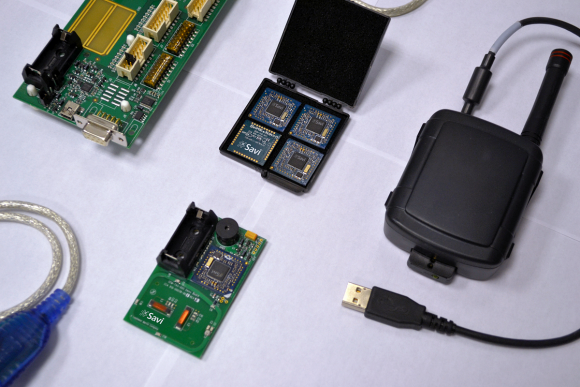
The current challenge for any supply chain is to be faster and more transparent than ever before, while continuing to remain efficient and dynamic. True, end-to-end visibility across the supply chain plays a major factor in optimizing performance, namely because true visibility doesn't just show dots on a map, but it provides insight into less visible areas.
Even with precise planning, things go wrong. This is why the potential for true visibility is so important for manufacturers, retailers, and other supply chain dependent companies. With true visibility and accurate estimated time of arrival (ETA), companies will increase profitability and productivity by gaining the knowledge to plan better in order to lower transportation costs, improve cross docking, minimize out-of-stocks, increase inventory turns, and improve service levels.
Advanced technology has the ability to analyze real-time and historical data to aid supply chain visibility efforts. Through the combination of sensor and big data analytics technologies, companies now have the power to obtain complete, end-to-end visibility within their supply chains due to real-time, dynamic operational intelligence that helps to reduce logistics management costs by optimizing shipments to production facilities, distribution centers, mixing centers, and stores with more accurate ETAs, improving carrier performance, and reducing out-of-stocks.

Next page
Reduce Logistics Management Costs
CPG, retail, and manufacturing companies are focused on improving their cross docking operations to reduce overtime pay, demurrage, additional shipping fees, and customer delivery penalty costs. Technology that delivers accurate ETA has the potential to prevent expensive production delays, transportation penalties, and customer penalties for late shipments by delivering visibility of in-transit inventory across the supply chain.
With real-time sensor data, companies can track the location of raw materials, semi-finished goods, and final products at their facilities. Sensor and big data analytics solutions track real-time shipment location data and adjusts the anticipated arrival time by considering historical patterns of disruption caused by weather, port congestion, customs clearing time, and other factors.
Real-time visibility about ETA enables dispatchers and planners to make better cross-docking decisions to decrease logistics and production costs and improve delivery times to customers. Companies can then use the insight from advanced analytics and machine learning solutions to model the best routes and times for shipments. Additionally, better in-transit visibility reduces the need for premium freight services, such as expedited shipping which results in a significant cost savings.
Improve Carrier Performance
CPG, manufacturing, and 3PL companies spend a large amount of time, money, and resources performing manual carrier reconciliations at the end of each period to validate payments and calculate carrier scorecards. Most of the time is spent manually researching when the carrier actually picked up the product, what they delivered, and when they delivered it. Sensor data and analytics solutions dramatically improve the accuracy and timeliness of carrier performance evaluations while eliminating manual processes and decreasing costs.
Advanced big data analytics and sensor data solutions can maximize the value from carriers, 3PL companies, and suppliers across supply chain network. With advanced analytics solutions, companies are able to evaluate carrier performance and receive a single view across all carriers, 3PLs, and other transportation companies with sensor agnostic and open cloud based systems that can provide a complete, end-to-end view. With this information, companies are able to evaluate schedule and route efficiencies per carrier, on-time delivery performance per carrier, and driver performance.
Detailed analytics compares actual shipment data to planned and estimated arrival information to provide transportation and logistics managers with an accurate and current picture of carrier activities and performance. Dashboards, scorecards, and analytics include carrier delivery times, on-time performance, ETA accuracy, and service level agreement analysis across primary and alternate routes.
Reduce Out-of-Stocks
Retail, CPG, manufacturing, and food service companies are concerned about the location of shipments from a plant or distribution center. They are also concerned about knowing when and if a product is running out of stock, as well as the status of high-value customer orders. To meet these needs, on-time delivery is critical. In the battle for shelf space, a late delivery to a retailer could cost these companies a high percentage of sales.
Most companies rely on historical data and high levels of safety stock to minimize costly out-of-stock situations. But advanced machine learning and sensor data analytics can anticipate when a shipment will be delayed or a carrier will change their ETA that enables companies to reduce out-of-stock situations. With real-time information about shipment status and carrier's ETA, companies are able to know precisely where their goods are at any time.
As a result, complete end-to-end visibility afforded by sensor and big data analytics solutions will enable companies to identify key areas to optimize their supply chains and reduce operating costs.
About the Author
Scott Dulman is a Senior Director at Savi Technology responsible for supply chain Analytics, IoT, and SaaS solutions. Scott has more than 20 years of enterprise systems technology experience and was previously Senior Director of Product Management at SAP, Business Objects and Oracle. He has led the product management and marketing of innovative Analytics, SCM, SaaS, and IaaS product lines. Scott has managed the strategy, planning, design, and development of enterprise systems at leading commercial, government, and defense organizations. He has led the delivery of Analytics, SCM, and Cloud solutions for clients in North America, Europe, and Asia. Scott received a SM in Operations Research and Operations Management from MIT.